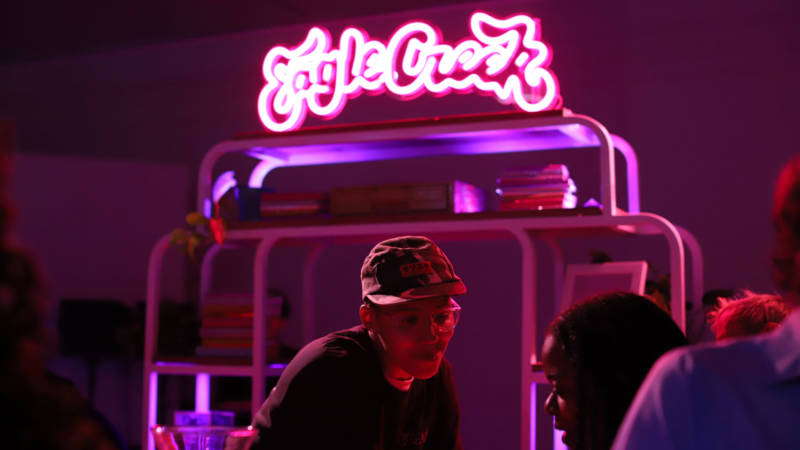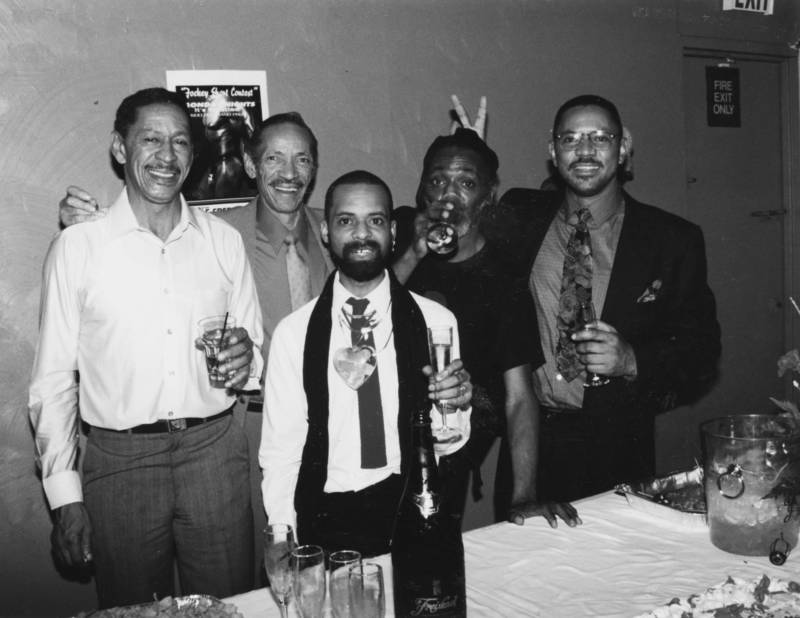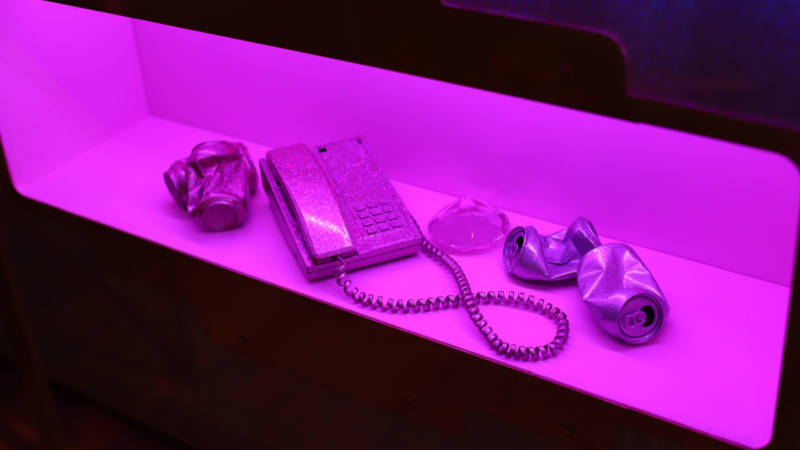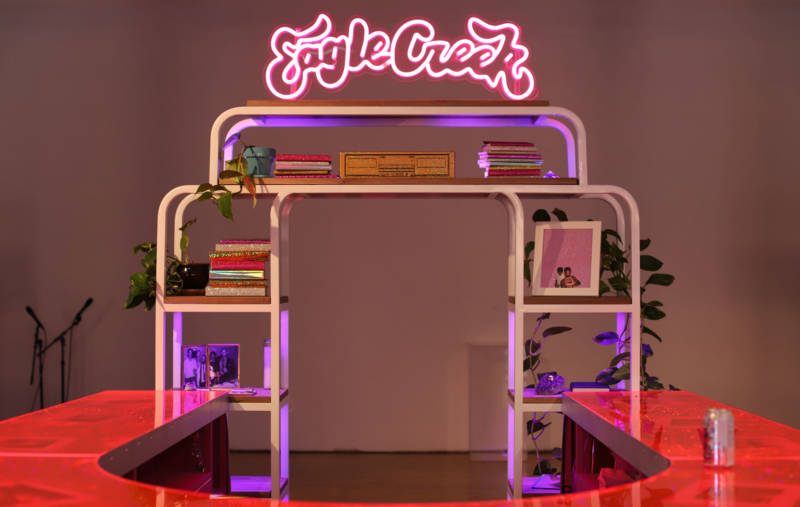Editor’s Note: This article is part of KQED Arts’ story series Pride as Protest, which chronicles the past and present of LGBTQ+ activism in honor of the 50th anniversary of the Stonewall riots. Learn more about the series here.
One Saturday evening last month, dozens of people hovered around a horseshoe-shaped bar in the Mission District of San Francisco. Diffuse blue and fuchsia lights shone on white patent leather sofas, and a DJ played vinyl—mostly throwback funk and disco beating with a steady pulse. Arched over the scene was a pink neon sign with the words “Eagle Creek.”
As the music quieted, Sadie Barnette and her father Rodney sat on stools beneath the neon, and explained why this art space, usually known as the Lab, looked and felt like a nightclub. In the 1970s and 1980s, Rodney recalled, gay bars were among the least hospitable places in San Francisco for black people such as himself. There was hardly a place for gay black people to dance, let alone throw a fundraiser for a gay black political candidate.
“That’s why I bought the Eagle Creek,” he said.
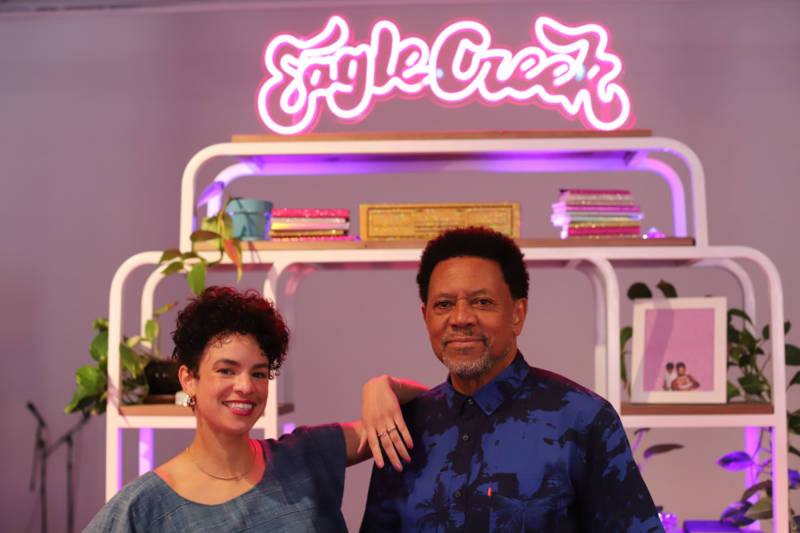
Sadie was five years old in 1990 when her father acquired the bar that for the next three years provided gay people of color a site of protest, refuge and revelry on Market Street—”a friendly place with a funky bass for every race,” as its slogan went. Now the Oakland artist is using her residency at the Lab to to honor her father’s venture with “something living, something more than a referential archive,” she said. “I want this to channel Eagle Creek, not just be about it.”
